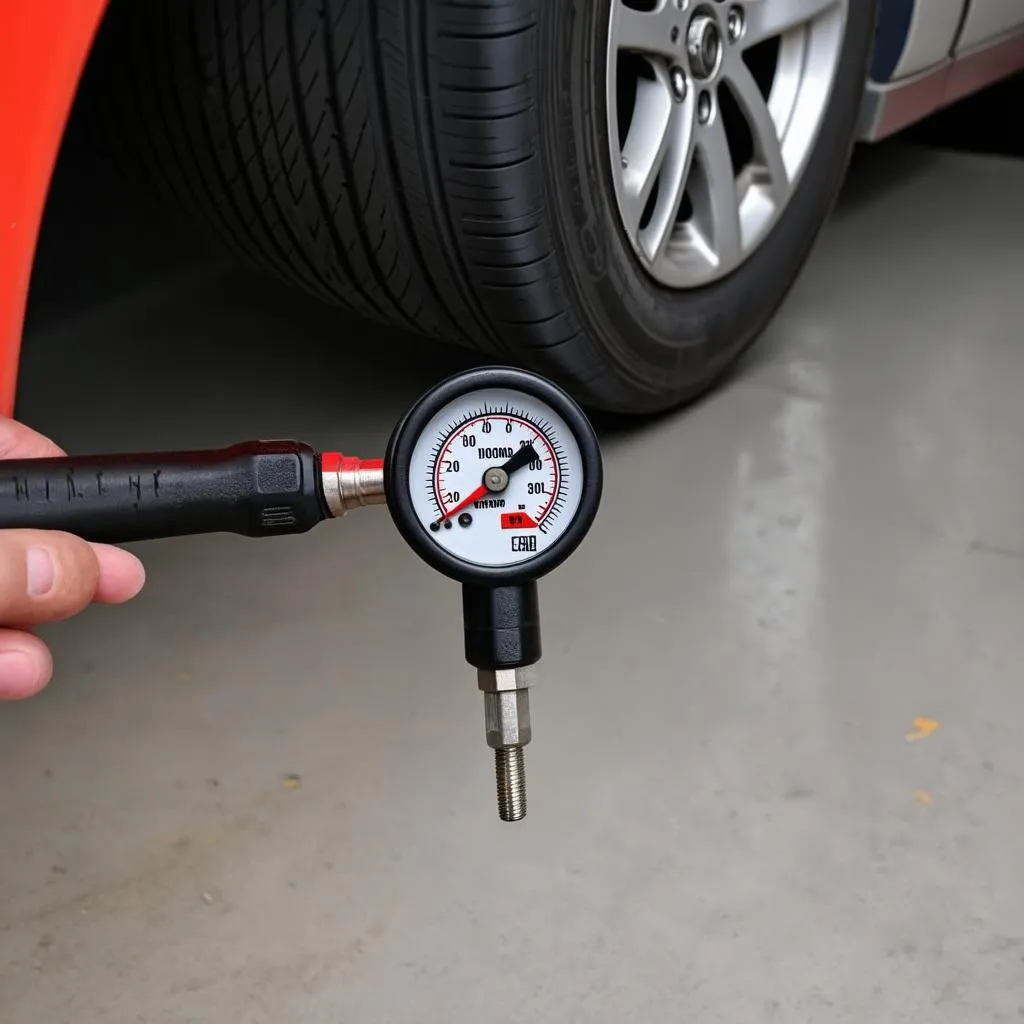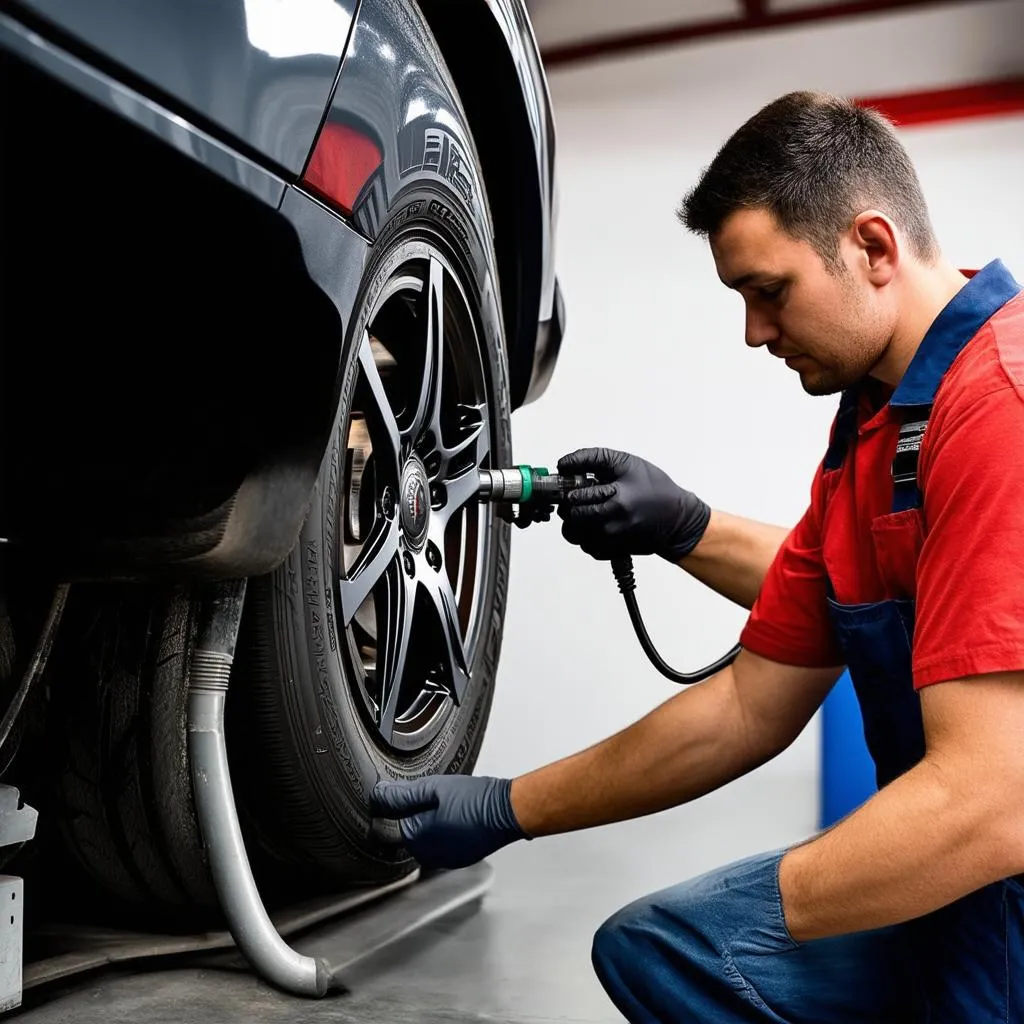Have you ever been driving down the road, minding your own business, when suddenly a little yellow light pops up on your dashboard? It’s shaped like a horseshoe with an exclamation point in the middle, and you think, “Oh no, what now?” That, my friend, is your tire pressure monitoring system (TPMS) telling you something might be off with one or more of your tires. And if you’re thinking about using a Centech OBD scanner to check it out, you’re in the right place.
Understanding the Centech OBD and Your Tire Pressure Light
Before we dive in, let’s talk about why this little light is such a big deal. Just like a sturdy foundation keeps a house upright, properly inflated tires are crucial for a safe and smooth ride. They affect your car’s:
- Fuel efficiency: Underinflated tires create more rolling resistance, forcing your engine to work harder and guzzle more gas. Think of it like trying to walk through sand – it takes more effort!
- Handling: Ever try steering a shopping cart with a wobbly wheel? Underinflated or overinflated tires can make your car feel similarly unstable, especially at higher speeds or in challenging weather.
- Tire lifespan: Driving on tires with incorrect pressure causes uneven wear and tear, shortening their lifespan and leading to premature replacements.
So, when that TPMS light throws a tantrum, it’s best to listen. Now, where does Centech come in?
Centech OBD Scanners: Your Car Whisperer
Centech offers a range of OBD (On-Board Diagnostics) scanners, handy little devices that act like translators between you and your car’s computer. They plug into your car’s OBD-II port (usually under the steering wheel) and can read those cryptic trouble codes that trigger warning lights, including the TPMS light.
 tire pressure gauge
tire pressure gauge
However, there’s a catch! Not all Centech OBD scanners are created equal when it comes to TPMS. Some basic models might only read engine codes, while others, particularly those designed for European cars, might have more advanced capabilities to diagnose TPMS issues.
Troubleshooting Your TPMS Light with a Centech OBD Scanner
Here’s a step-by-step guide to using a Centech OBD scanner to check your tire pressure light:
- Identify Your Centech Model: Check your user manual or the Centech website to determine if your scanner supports TPMS diagnostics.
- Plug and Play: Connect the scanner to your car’s OBD-II port.
- Turn the Ignition On: Turn your car to the “on” position but don’t start the engine.
- Navigate to TPMS: Use the scanner’s menu to find the TPMS section.
- Read the Codes: The scanner will display any stored TPMS codes. Note them down or take a picture.
- Consult a Mechanic (If Necessary): If the codes aren’t self-explanatory, consult a trusted mechanic or your dealer. They can interpret the codes and recommend appropriate action.
Beyond the Basics: Other Possible Causes for TPMS Issues
While a Centech OBD scanner can be helpful, it’s important to remember that a TPMS light could be triggered by issues beyond just low tire pressure:
- Faulty TPMS Sensor: One or more sensors in your tires might be damaged or have a dead battery.
- Sensor Signal Interference: Electronic signals from other devices in your car could be interfering with the TPMS sensors.
- TPMS Control Module Issues: The module that receives signals from the sensors might be malfunctioning.
 car tire sensor check
car tire sensor check
Frequently Asked Questions about Centech OBD and TPMS
Here are some common questions people have about using a Centech OBD scanner for TPMS issues:
Q: Can I use a Centech OBD scanner to reset my TPMS light?
A: Some Centech scanners, especially those with advanced features, might allow you to reset the TPMS light after you’ve addressed the underlying issue (like inflating your tires to the correct pressure). However, it’s always best to refer to your scanner’s user manual for specific instructions.
Q: My Centech scanner isn’t showing any TPMS codes. What should I do?
A: This could mean a few things. Your scanner might not support TPMS, the issue could be something other than the TPMS system, or there might be a problem with the scanner itself. It’s best to consult a mechanic or Centech’s customer support for further assistance.
Q: How often should I check my tire pressure?
A: It’s a good habit to check your tire pressure at least once a month and before any long road trips.
Looking for More Automotive Insights?
We hope this article has shed some light on using a Centech OBD scanner for TPMS issues. Remember, proper car maintenance is key to a safe and enjoyable driving experience. If you’re ever in doubt, a trusted mechanic is your best bet for accurate diagnosis and repair.
For more helpful tips, product reviews, and automotive advice, explore other articles on techcarusa.com!
Need help with Diagnostic Tool Installation? Contact us via WhatsApp: +84767531508. Our team of automotive experts is available 24/7 to assist you.